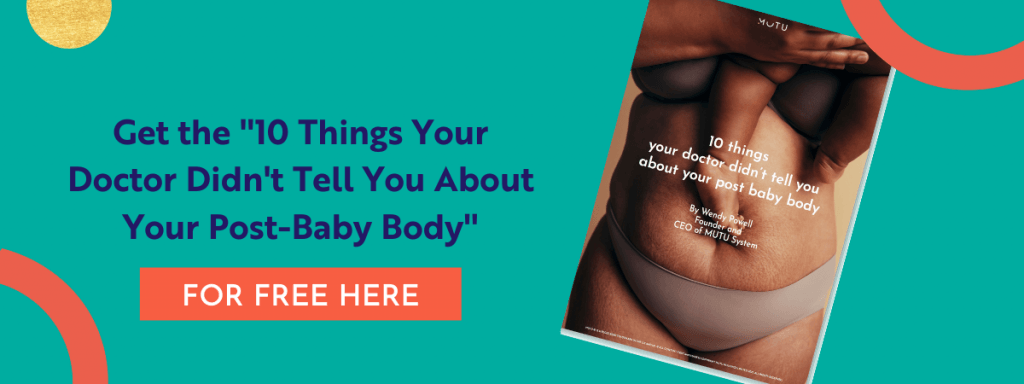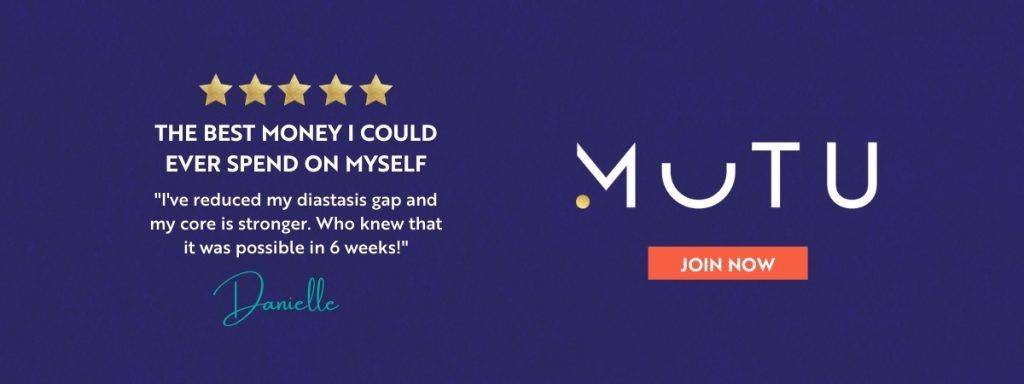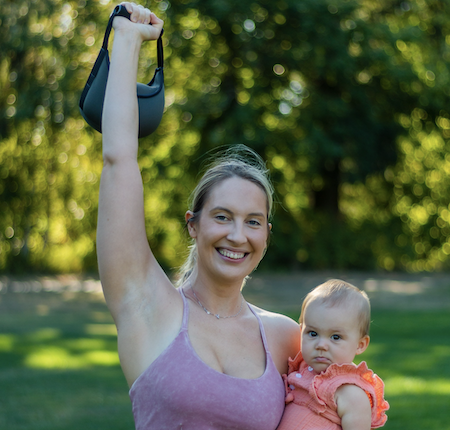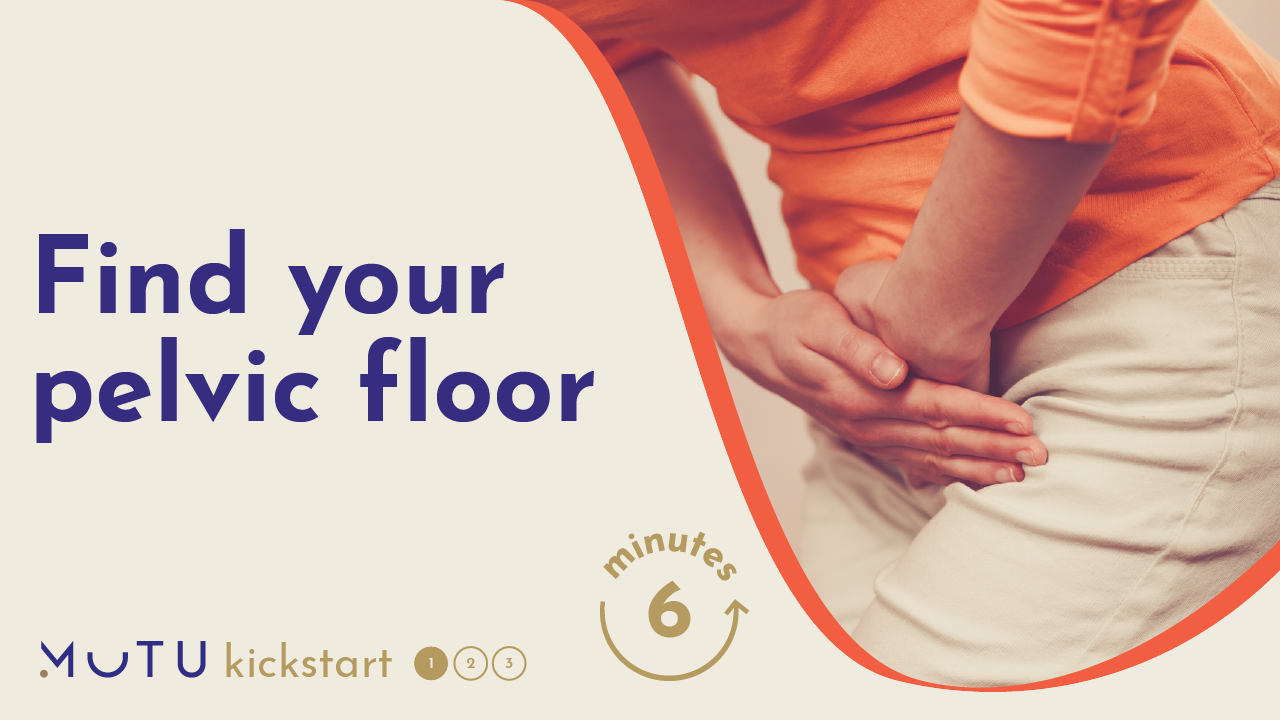Many Moms who want to get back to exercise ask “How long postpartum till I can do [insert exercise or sport of choice] again?”
Take care and time with your goals mindset here, especially if your ‘exercise of choice’ involves a marathon, taking an intense HIIT class or a 50KG deadlift. Awesome goals that you *will* get back to, but you’ll need to heal, restore and build your core foundations first. Please know it’s ‘not yet’. Not ‘not ever’. You just need to build your foundations first.
There’s frustration around having to take things slowly after having a baby. We see images everywhere of toned celebs who have “snapped back”, alongside body-shaming photos of those who according to the ever-judging media, have somehow missed the mark. Is it any wonder we put so much pressure upon ourselves to rush back to doing the heavy, high-impact stuff? There is way too much pressure on the question of ‘how long postpartum’ before you start.

So how long postpartum till you can get back to the exercises and activities you love?
When can we return to Zumba class, and start holding that yoga pose we’re determined to master? Start beating pre-pregnancy PBs in weightlifting? Rejoin your favorite HIIT class and work up a sweat?
It depends. There’s no one size fits all criteria for returning to high-impact exercise post-baby.
We start by listening to our body. You need to listen and look out for the signs it’s clearly giving you.
The signs you’re not ready yet
When your body is telling you it is not ready to do what you’re asking it to do post-baby…
- If you ever pee yourself, even a little bit! NO, “oops moments” are not okay or normal. Pelvic floor weakness is a red flag that something isn’t right
- Any kind of pain in the pelvic or lower back area whilst exercising or after exercising
- If your core feels unstable or you feel like your insides are unsupported when you do any exercise
- When you shake or tremble during any exercise, yoga pose, movement or hold. Have you ever done a plank and your whole body trembles? That’s what I mean!
- Doming, bulging, straining, protrusion or anything sticking out where it shouldn’t be from your abdomen or pelvic floor, during or after exercise
If you’re experiencing the above, then certain types of exercise may create symptoms like leaking or prolapse, or make them worse. No amount of planking, crunching or running is going to flatten your tummy, heal your diastasis recti or stop leaking after baby.

Exercises to avoid just for now
With diastasis recti, core weakness, pelvic floor dysfunction, and any nagging symptoms you aren’t sure about, take it easy in the moves listed.
But you will progress, gradually building back to where you want to be. As you build back strength with MUTU, keep trying modified versions of harder moves with our expert guidance. Listen to your body and respond to its signals and new boundaries as they change.
❌ Sit-ups or crunches
❌ Oblique twists
❌ V-sits – Yogis, avoid Boat pose for now
❌ Planks
❌ Push-ups
❌ Jumping or skipping
❌ Burpees
❌ Running
❌ Heavy lifting
❌ Pull-ups
How long postpartum to stop core exercise?
You kinda don’t stop. Core exercise should go hand in hand with ‘working out’. It’s not something we do for a while and then forget about, once we’re back to the fun, sweaty, heavy stuff. Mindful core work needs to be at the forefront of your mind always, and that doesn’t matter if you’re lifting your 7kg baby out of her cot or an 80kg barbell at the gym. If you throw everything you’ve learned about core out the window once you hit the running track or your local bootcamp, you will risk undoing all your hard work up until this point.
Putting the time into core exercise and making it part of your every day, for every day going forward as long as you want to be a healthy, happy, functional and strong human being, is the key to making this work and to being able to do the stuff you love.
So core exercise isn’t a temporary replacement for the juicy stuff, it’s fundamental to your health, wellbeing and movement from here on out.

You don’t need harder ab exercises, you need different ones
You cannot strengthen or build muscles that aren’t functioning optimally. If your core or pelvic floor muscles are not working right, you can’t just make them stronger by planking or crunching. You won’t make these muscles stronger because you need to reconnect them first. This is what MUTU does. It builds the foundations.
If you get back to the hard intensive stuff too soon, you may risk prolapse, hernia, diastasis recti, abdominal separation, or leaks. These are all signs that your core isn’t working properly.
Signs of a core that IS NOT ready to run faster, lift heavier, plank for longer, crunch more, and just work on through.
The MUTU System program has been designed with your body in mind. The workouts are gradual and restorative, slowly introducing intensive, fat burning, low impact workouts, when you are ready. You’ll be taught how to assess yourself, how to know when you can ‘move on’ and how to adapt when your body isn’t strong enough just yet.

For full body confidence, a stronger tummy post-baby, a core that works and allows you to do the stuff you want to do. You can have the goals of lifting heavier, running for longer, or being the Queen of Burpees, but your primary goal should be to have a body that works so that you can…
Get a fully functioning core and pelvic floor, understand body alignment and use all of this when you move, then you can exercise and move any way you like!












